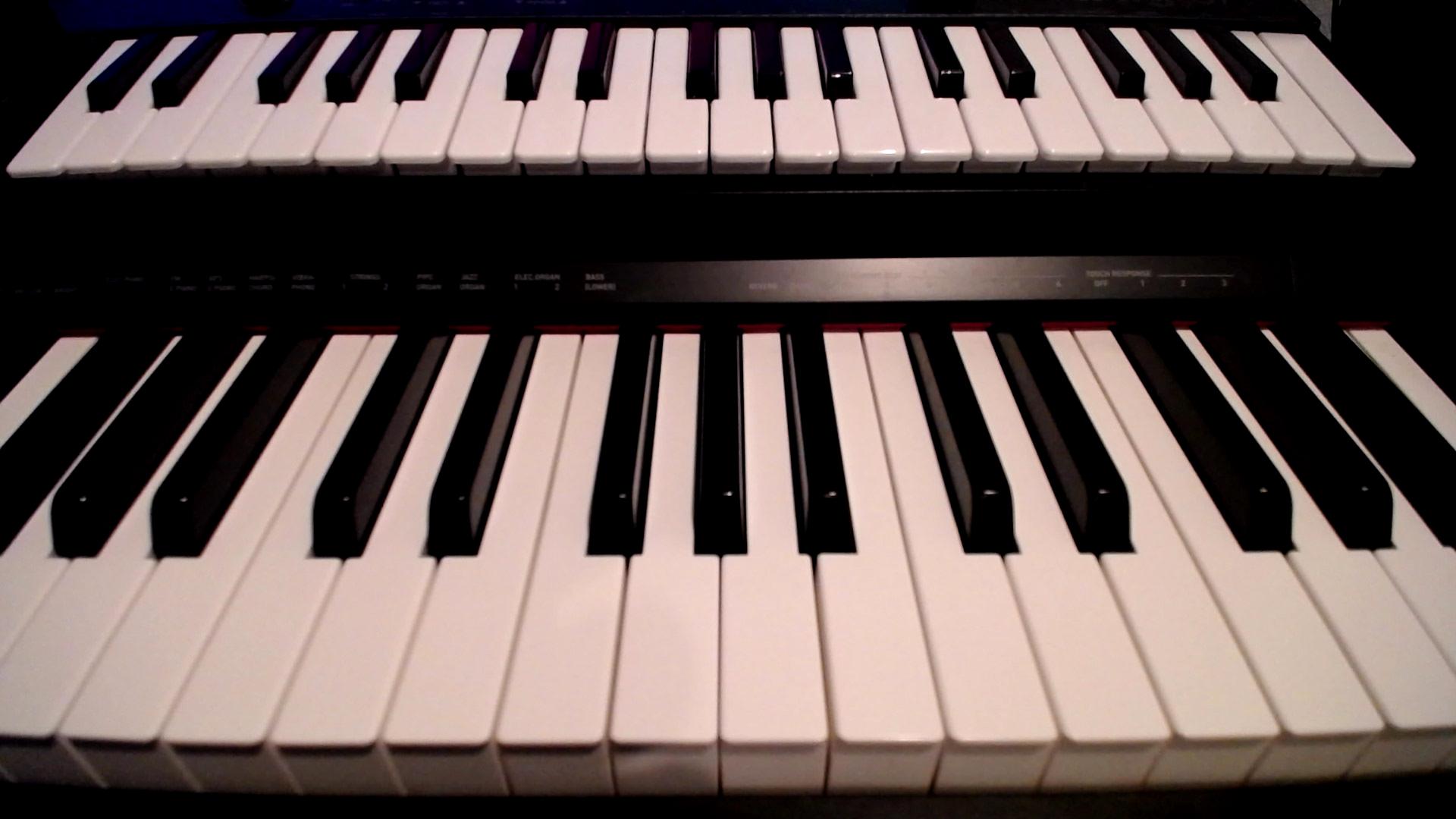-
Posts
35 -
Joined
-
Last visited
-
Days Won
1
Lotsy piano last won the day on November 30 2019
Lotsy piano had the most liked content!
About Lotsy piano

Profile Information
-
Gender
Male
Recent Profile Visitors
The recent visitors block is disabled and is not being shown to other users.
Lotsy piano's Achievements
-
@Luis Hernández You are right, it's probably TOO short :D, I wanted to make it short because I wanted it to have similar possible function as the "standard" length of the "Happy Birthday To You"-singing on a birthday party. I ever saw birthday videos on YouTube that people were singing some kind of choral version of the Happy Birthday song, and it was almost 5 minutes long, it was great, but I thought it's too long for that purpose, although probably I fall into the other end now 🙂 Probably in the future I will try to make a longer version of it.
-
@Luis Hernández @i(don't)suckatcomposing Thank you very much for your corrections! I've learnt something today again, that's why I like this forum! :) @J.Santos Ah yes you are right about that part (the scale-sequence part, right?), it also really Mozart-sounding, so that's another good spot! It really reminded me to the KV 545 1st movement's same type of scale-sequence, it starts with a short arpeggio/brokenchord upwards, then the scale goes down, and then the sequence repeats a note lower diatonicly (diatonically(?)).
-
Lotsy piano started following Rubato possibly overdone? , Happy Strideday To You! , DELETED #14 and 2 others
-
A very short simplified stride piano arrangement of Happy Birthday song, inspired by stride pianist Fats Waller: I'm planning to revise this in the future, because at the moment I don't feel completely satisfied with it, especially not with the ending. Originally I had a little extra right hand melody at the very end, but I didn't like that either, so I just left it like this for now. Any feedback is welcome! Thank you for help! Have a happy weekend Everybody!
-
As an organist, I don't know much about Mozart and I seriously lack of classical-classical experiences (I mean for ex. not classical-baroque, and not classical-romantic, but classical-classical), but from the Mozart pieces I've heard through my life, your piece has some really Mozart-y sounding parts for sure. Particularly my favorite parts are which I think they sound the most Mozart-y, around 0:03 "Di - Re" ("C# - D" in your piece's key), and around 0:09 the "Ri - Mi" ("D# - E" in your piece). I think this type of half-step (most of the time from bottom to the top(?) I mean stepping up a half-step we could call it one of Mozart's signature pitch-writing. As a mini-tip: I think you can do this half-step-up-melody-trick on almost any note, except "Li - Ti" ("A# - B" in C major key), because "A#" or "Bb" however we call it at the place of the context in C major key most likely it would sound like the "Fa" note of F major key, it would sound like the "Tay" note of C dominant chord, and "Fa usually want's to go a half-step down, instead of down, at least in the case of a C dominant 7 chord, if you would play for ex. a C dominant 7 chord and then a G or a G dominant 7 chord to force the A# go half step up to B, then I think it would not sound right in a classical-classical context, it would sound almost like a certain part of a blues chord progression especially if we would chose to use only dominant 7 chords. Probably I wrote this explanation unneseseraliy complicated and too long, sorry about that 🙂 It's not that important, but in an easier way I could say that my tip is that I think you can do these half-step-Mozart-y-pitch-writing: C# - D D# - E E -F (probably even F - F#) F# -G G# - A (but CAN'T do A# - B) B - C too I guess I can't explain well why I think this, this is just my intuition, probably I'm wrong somewhere, others might tell us where. Another little thing is that I think the Alberti-bass was a good choice to start with, I think Mozart liked to use it a lot! As I wrote earlier I don't know much about Mozart, but these are the things that I've noticed immediately even by not knowing Mozart too much so you made even me recognize the essence of Mozart in your piece, so I think you are on the right track!
-

My first piano etude (easy-intermediate)
Lotsy piano replied to Lotsy piano's topic in Piano Music, Solo Keyboard
@panta rei Thank you very much for your kind comment, I really appreciate your encouraging words! I can't remember any (specifically)piano etudes that uses this same pattern, because I'm not a pianist, but I'm an organist, and in my school organists had to learn some (usually easier-intermediate level) piano pieces and I remember playing patterns like this one in some mandatory piano piece which I forgot the title, but I think it was Haydn, which was a little bit surprising to me, because at that time I considered this pattern as a typical baroque pattern, and I actually almost never learned any classical piece on the organ (I mean classical classical if you know what I mean :), not classical baroque, but classical classical), my only classical piece was a 4-handed 4-feet organ arrangement of some less known classical composer whose name I forgot by now, but as an organist I can say that this pattern in organ music (at least baroque) is very common, probably most common in preludiums or toccatas especially when the composer want his piece sound flashy. Even earlier baroque like Buxtehude pieces has this pattern many times (not as a whole etude piece, but maybe just a short part of a toccata or something like that), so I thought I will try to make my first etude with this kind of "standard" pattern, because I wanted to keep things simple for the first try. I think it's a good idea that you and J.Santos (an now me too :)) write etude with the same pattern, because this makes it a little bit easier to analyze our pieces (if we want to analyze them), because we don't really have to analyze anything about the pattern itself, so this way it becomes easier to learn from eachother's pieces which is always useful I think. I'm looking forward to listen to both of your etudes, I'm sure they will be great! I checked your musics too, and I think I can definitely can learn a lot of tips/tricks from them! Happy composing and happy weekend! :) -
@Left Unexplained I think in a way we all are beginners, we all have things to learn, I came here to learn too, so don't worry about a thing :) Actually I have the same experience if something is new to me, even if it's not really something special (and I guess that's the way for everyone). There is a saying(?) in my native language that in English would sound something like this: "Every joke is new joke to a new born baby." I guess we all are here to hear new jokes, and that's the fun part of whole forum too :)
-

My first piano etude (easy-intermediate)
Lotsy piano replied to Lotsy piano's topic in Piano Music, Solo Keyboard
@J.Santos Thank you for your thoughts J! 🙂 I will consider your Étude in C major title idea! If you find something interesting in my music that you like very much, you can copy some of it to your music, I don't mind at all don't worry. I'm here to learn too, as we never stop learning, so let's learn together! 🙂 (PS. Maybe you missed the clef change, the last 2 bars are in treble clef, but I think the smaller size of that treble clef makes it easier to miss, especially if the sheet music shows only 1 staff line at a time (1 or 2 or 3 bars in this case), especially sight-reading fast stuff, which I'm very bad at, in my country we don't have (at least I never ever had) sight-reading exams or exercises or class, etc.. I have a bachelor organ diploma (3 lines of staff for 2 hands and 2 feet), but I'm terrible at sight-reading, if I could go back in time, I would learn to sight-read much better before I start to learn my harder and harder pieces, that way I would learn at least the new notes much faster too, because the way I had to do is just to memorize the cr.. out of it 🙂 and that made my learning time painfully slow while I was in the "learning-new-notes"-phase of the new pieces, so my sight-reading level is at around Grade 2 ABRSM piano, Grade 3 at best)) -
@Luis Hernández I was thinking a little bit, and I think I write very little instructions/symbols in my sheet music, because I got used to that when I was an organist (on paper I'm still am, but I don't play, because I moved to a place to marry where there is no organs or churches and nobody cares about organ, so I "stuck" with piano 😄 but actually I like piano about the same as organ, so I'm lucky that this little switch was never a serious problem for me, although I can't play the piano that well, my playing is especially bad in this Etude video, very imprecise, I can't get used to my digital piano's keys, it's weighted but it feels weird when I have to play something fast, I feel like my fingers are moving in the empty air or something, unfortunately at the moment I don't have the money to buy a grand piano not even a pianino, but probably I don't really need that too, I don't want to be a concert pianist, just a piano-composer, so I guess I have everything I need now little bit, with this digital piano 🙂 )
-
This my very first piano etude. I'm not very good at identifying the grade level of different pieces, so I just say it is around "easy-intermediate" level. 🙂 I was thinking a lot, what should be the title of this, and finally I've found a very creative title for it: Etude No. 1 The ossia staff line is there just to allow people to play the piece easier who have smaller than 9th white keys interval hand-size. Thank you for your feedback, and have a funny day Everybody 🙂
-
Hello! 🙂 Overall I like it, it has a nice harmonic-world, and it is pleasant to listen to. Sometimes I've had the thought that it starts to become a little bit boring because of the little changes through the whole piece (at least rhythm-wise), but at the end of the piece I felt some kind of completion, so it didn't really bothered me. I can't point out specific areas, because I think the whole piece sounds kind of the same at any point, which I guess was your aim, because it creates a mood, and stays in the same mood, and it still stays in the same 1 mood when you play higher notes or lower notes, I don't think there is any problem with that, but I think people must have a certain mood or a certain mindset/state(?) to enjoy this type of whole piece. I would put it into Satie's "Furniture Music" genre 🙂 I think this is a well done job, but don't listen to me only 🙂 I have a feeling the minimalist(-ish) music is pretty divisive, because not everybody likes a lot of repetition in music (although I like repetition, but most of the people don't really like, at least that's my experience, at least in the classical music world, but "non-classical" music like pop or techno and stuff like that, those kind of things are built on a lot of repetition, so maybe that's why most of classical musicians don't really like those, but maybe it's just my opinion, well at least it's my experience 🙂 ) So I think the best to do now is to just wait a little more for a few other people's opinion too, so you will see what kind of ideas others can give you. (PS. sorry for the wall of text here, I don't know why I type a lot sometimes, maybe it's just one of our pianist thing 🙂 )
-
@Luis Hernández Thank you for your thoughts! I think you are right, I almost never write any pedal symbols in my piano music, because I always see multiple different correct sounding solutions (at least they both sound correct to me), so I just don't write anything there, because I also don't want to feed the strictness what I experienced through my music high school and music university years, many of the teachers there were very strict about how exactly we should follow all the symbols and instructions in the sheet music, and I just can't agree with that too much, because it sucks out most of the creative part of performance, and that's bad for creative performers. I think without a lot of freedom in the sheet music, performing it will be just a task, without any serious decision making, and without any opportunity to decide between stuff, there is no place left for creativity.
-
@Left Unexplained Thank you! 🙂 Really, you think they are inventive? I didn't think about them like that, but I'm happy if you find them interesting. Maybe they really sound kind of inventive compared to the not really inventive first 2/3 part. I guess it looks like they make good contrast then 🙂
-
Thank you Tónskáld! I aimed for "easily acceptable" dissonance that I would still consider easily accessable music for casual people who don't really play music or anything, but maybe go to concert or something like that. Yes, I suspected that's what he meant. I'm also not really good at talking about music theory, especially in English, I don't know a lot of musical words about music theory in English, although I'm trying to learn, sometimes I watch some YouTube videos about some interesting case of music theory things, and I can even hear the words pronunciations too, usually I don't have much problem listening to english words, I can write most of them down by ear usually correctly, but I don't know their meaning so I have to put them into a vocabulary website thing
-
I wrote this about 3 or 4 years ago, I don't remember exactly, and I re-recorded it, because I noticed that my old recording had a wrong note (wrong rhythm) in the recording, although there are a few places in this where I overdo the rubato and because of this sometimes it sounds almost like wrong rhythm, but I almost never write tempo markings or really anything performing-instructional(?) texts into my sheet musics because I want to give the freedom and the puzzle to solve to the performer, because in my opinion, most music has multiple performing solution, so here is the video: What do you think about the rubato? Do you also think I overdo it? Thank you for your help, have a nice day Everybody!
-
Thank you for your kind comment! My English is not so good, so can you please tell me in different words, what do you mean by "harmony by 2nd"? Thank you again. :)




